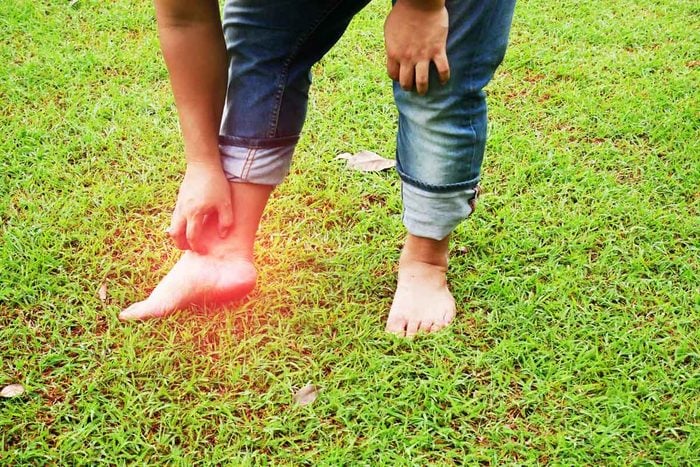Ant Bites: What To Know

Ant bites and stings are more common than you think. Learn which ants are relatively harmless and which you should avoid at all costs.
Of the more than 12,000 known species of ants living all around the world, about 1,000 can be found in North America. Scientists believe that ant colonies have roamed the planet since the early-to-late Cretaceous period (around 145 million years ago). Today they inhabit every continent on Earth, except Antarctica and a few remote islands.
Did you know that all ants have the ability to bite but only a handful living in the U.S. ever do?
Rarely fatal and not often considered dangerous, bites mostly occur when an ant or its nest is disturbed. The resulting bite can range from barely noticeable to extremely painful, depending on the type of ant and the circumstances of the encounter. Just like human beings, if an ant feels threatened and has the wherewithal to defend itself, it will.
On This Page
Do Ants Bite?
Yes. And they can also sting.
Of the ant species known to bite humans and animals, some will use their jaws to bite, while others employ stingers to deliver a noxious venom. Some ants can do both — munching down on the skin first then using their sharp stingers to inject poison into the wound.
Which Types of Ants Bite?
An ant that bites uses their mandibles and mouth to pinch the skin. Stinging ants (females only) use their stinger, located on their abdomen, to deliver their poisonous jabs.
The species of ants who both bite and sting include:
- Imported fire ants (capable of delivering painful stings multiple times).
- Harvester ants (their sting can kill small animals).
- Acrobat ants (mild reactions can be expected).
- Pavement ants (bites and stingers are rarely able to penetrate the skin).
The types of ants who only bite:
- Carpenter ants (tend to attack when threatened).
- Crazy ants (inflict a mild wound with little or no pain).
- Field ants (bite, but only if disturbed).
- Leafcutter ants (have strong jaws that can draw blood).
Note: A few ant species, such as the Western thatching ant, bite and then spray a chemical called formic acid into the wound, which can cause the skin to blister.
What Do Ant Bites Look Like?
After you’ve been bitten or stung by any type of ant, it’s typical to find a raised red bump or swollen welt at the site. This is usually followed soon after by an itching sensation.
The dreaded fire ant is highly aggressive and its bite produces a slightly more intense skin response. According to Dr. Neha Pathak of WebMD, “The fire ant sting typically causes red hive-like lesions that burn and itch. Painful pus-filled lesions can also occur.” You might also notice numerous marks forming a circle — a tell-tale sign you’ve been pricked by the nastiest of ants.
How To Handle Ant Bites
If you experience a mild local response to an ant bite (red bump or welt), you can usually just treat the site with a cold compress or take an anti-inflammatory pain reliever. If itching is persistent, applying an over-the-counter antihistamine cream can help.
For more severe skin reactions (one to two days of swelling that becomes increasingly hot and painful), contact your doctor.
Allergies to insect bites, can trigger life-threatening anaphylaxis. Serious signs of an allergic reaction include:
- Shortness of breath
- Difficulty swallowing
- Nausea, vomiting or diarrhea
- Hives and/or itching throughout the body
- Weak or rapid pulse
- Dizziness or fainting
If you experience any of the above symptoms, don’t hesitate and call 911 immediately or go to the nearest hospital emergency room. If you carry an EpiPen (epinephrine), use it right away!



